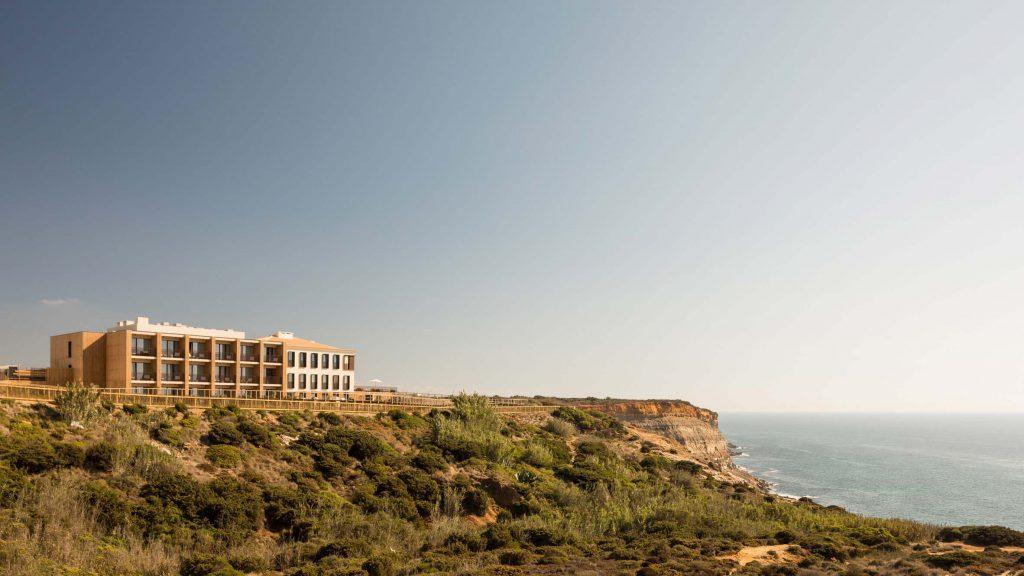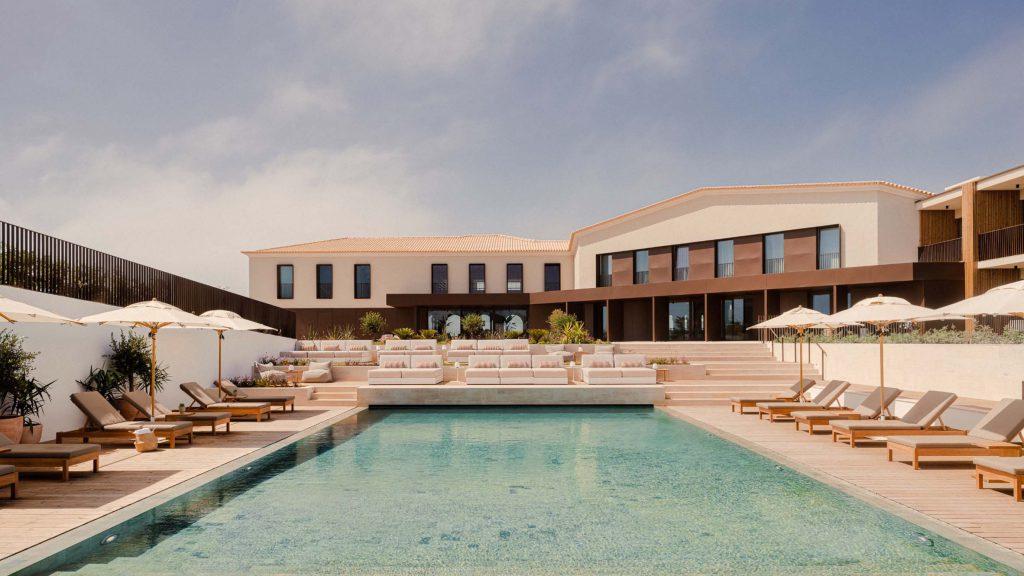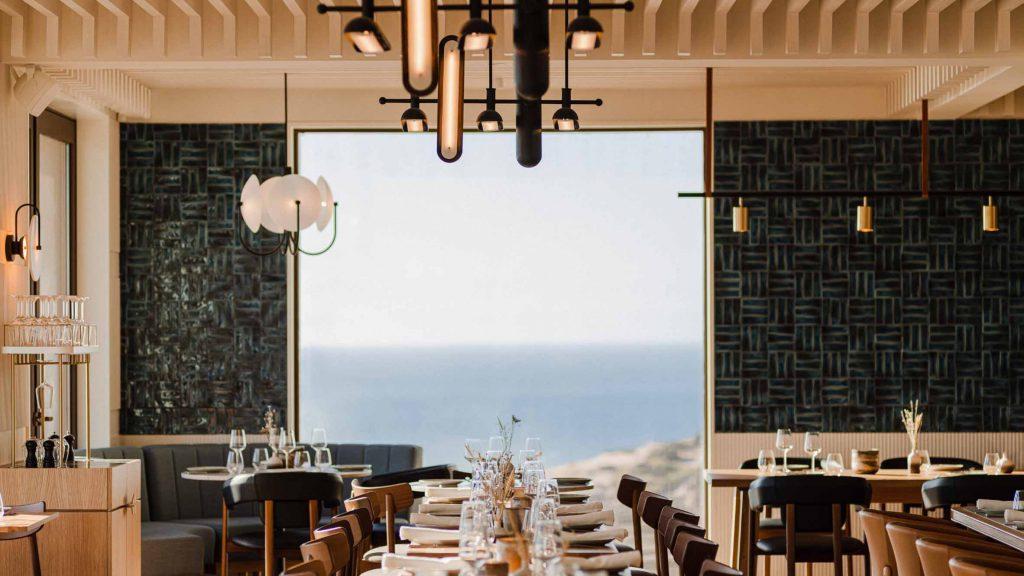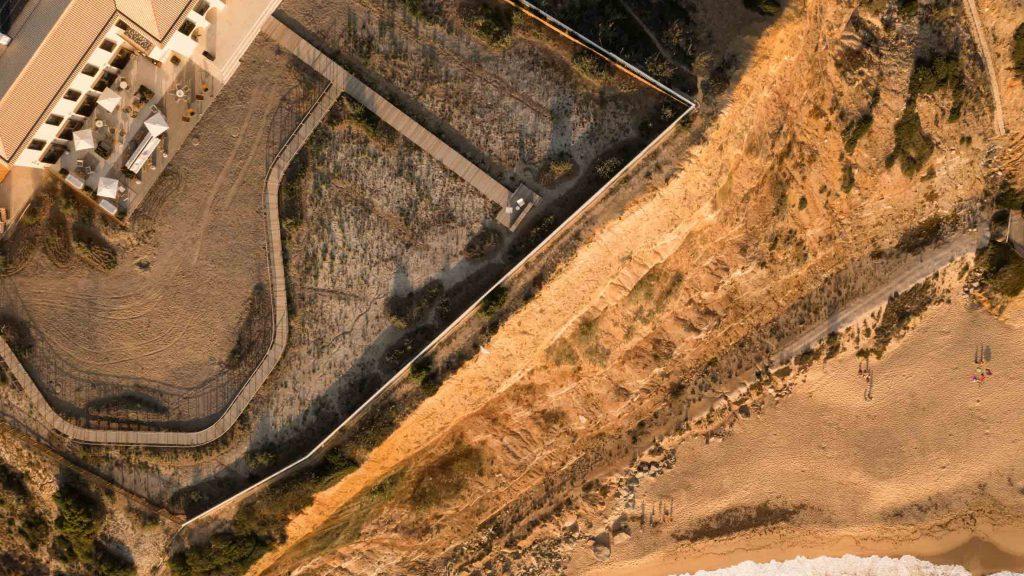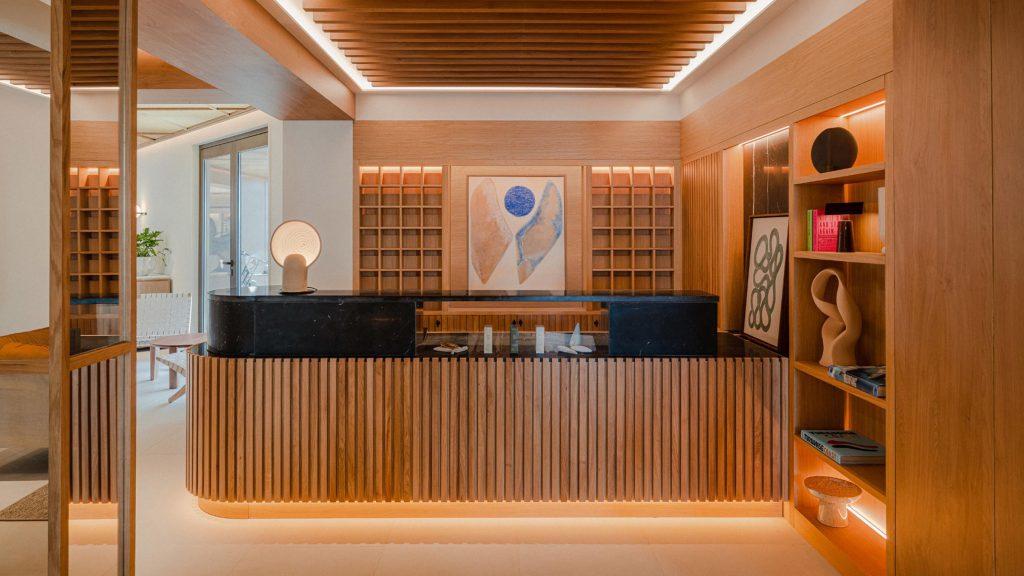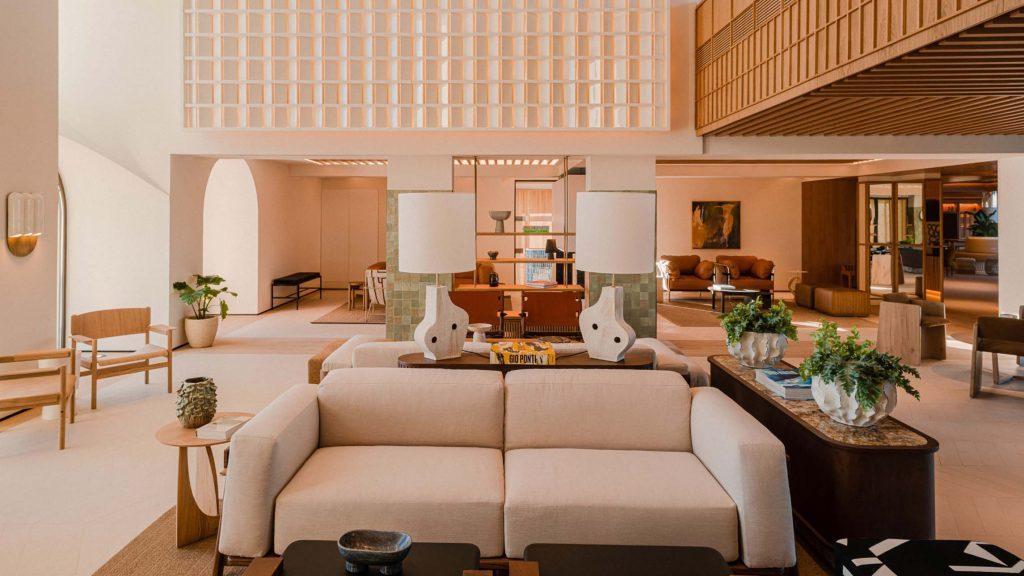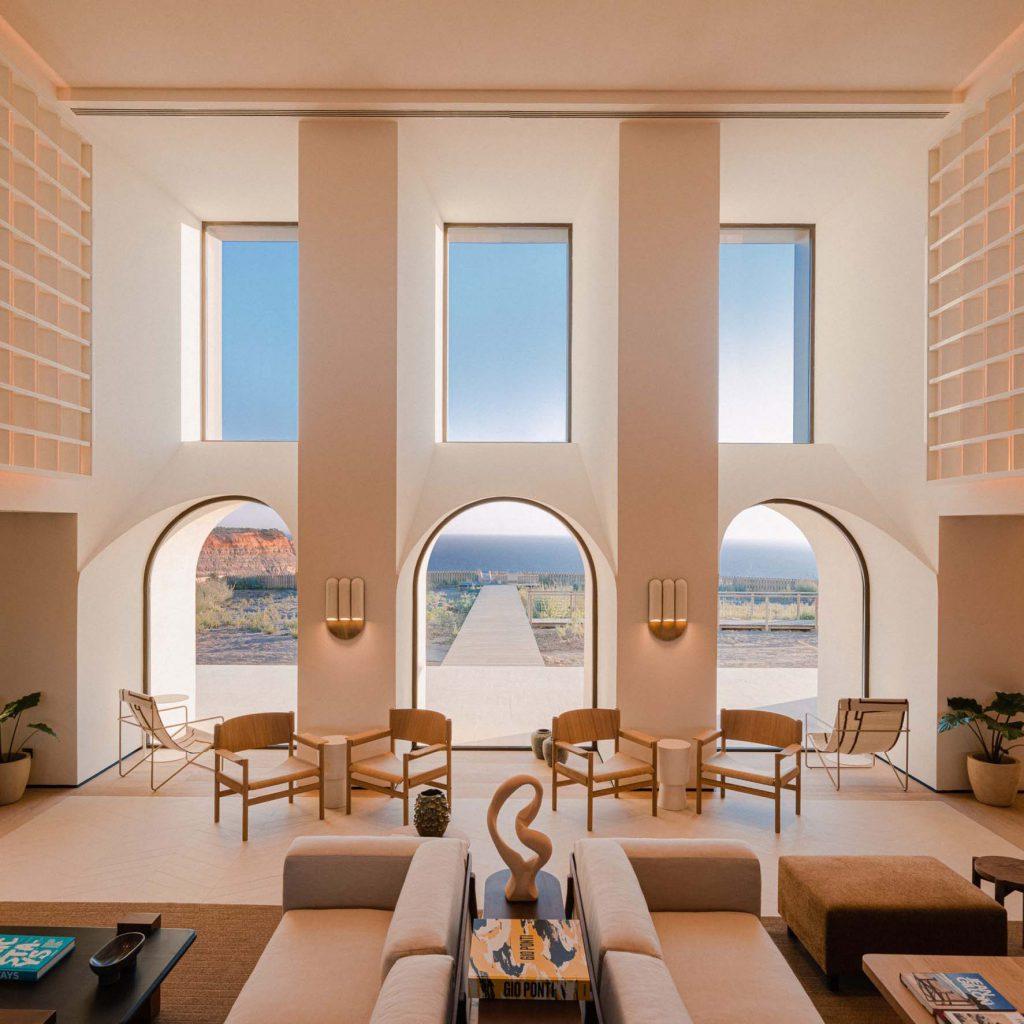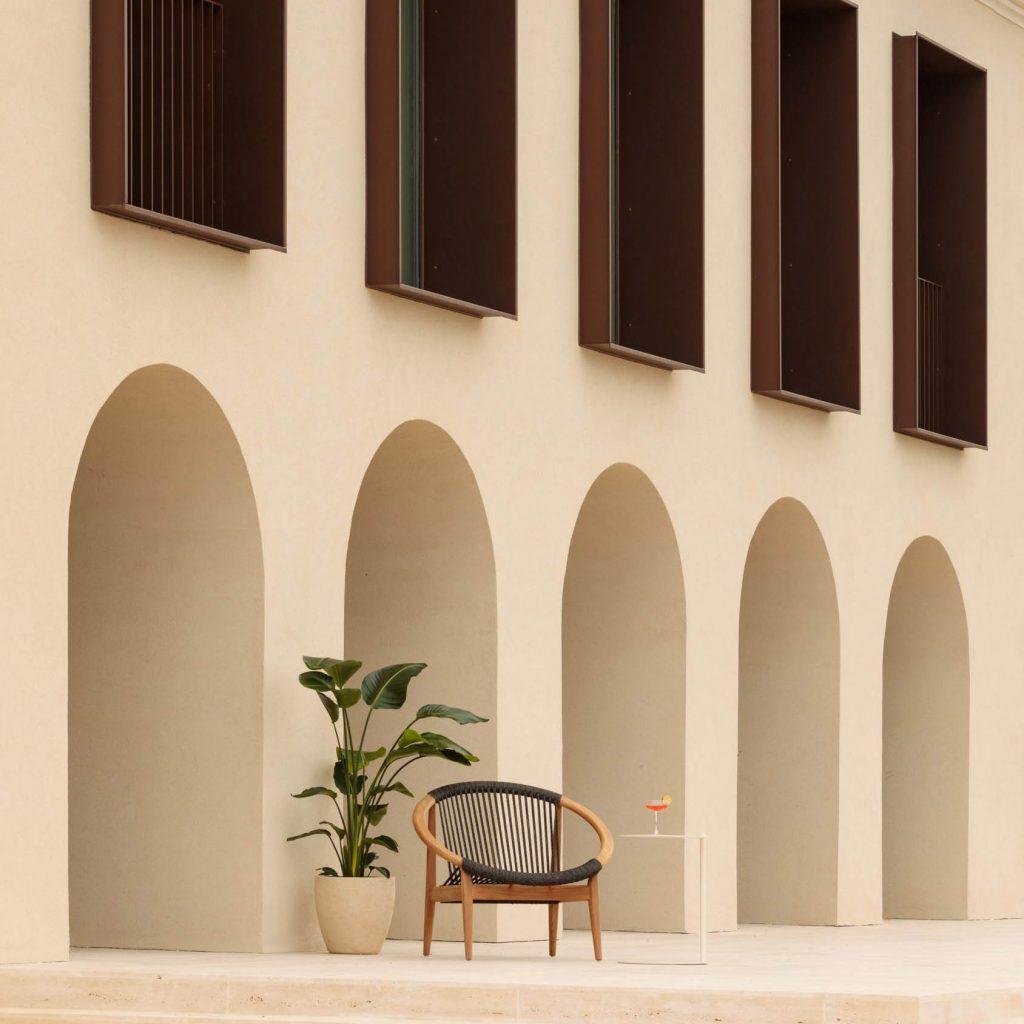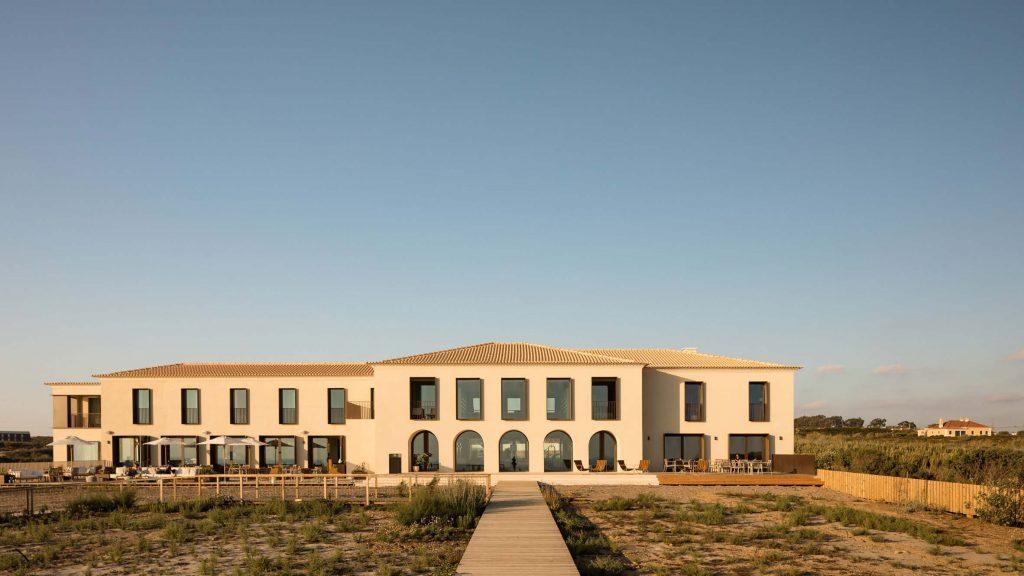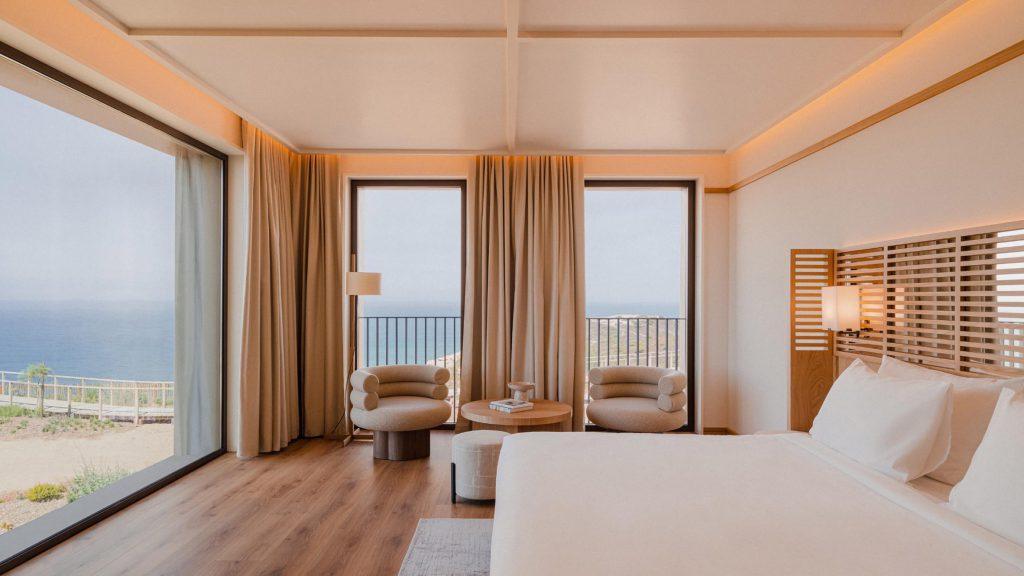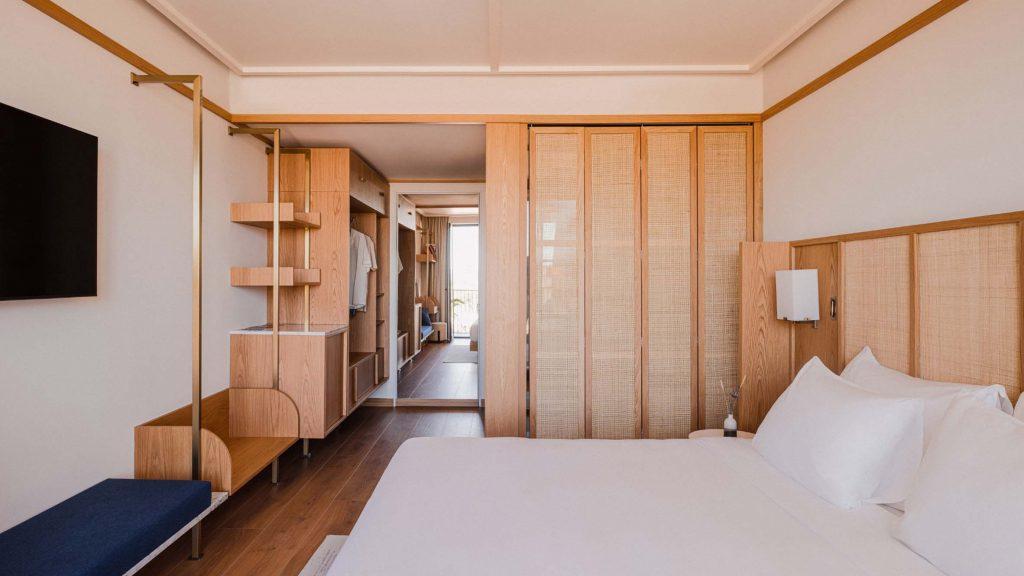Architecture as mindfulness
In their design for the Aethos Ericeira hotel in Portugal on a clifftop 40 metres above the ocean, the architects at Pedra Silva Arquitectos have shown that mindfulness is found in different guises.
Rows of houses painted in white. Lovingly cobbled streets. Atlantic Ocean waves breaking at a reliable height on tranquil sandy beaches that have been a favourite surfing location for decades. In short: the idyllic fishing village of Ericeira on the west coast of Portugal has a charm that is almost second to none.
A special place on Earth
In this small-town beauty spot, Lisbon-based architectural office Pedra Silva Arquitectos recently developed a very special luxury hotel in cooperation with the Spanish design studio Astet. Far from intruding on the peace and quiet, the hotel is intended to enhance this exceptional location. And also to create a place where guests will be literally mesmerized by the magnificent surroundings.
This wasn’t such an easy task, explains Benjamin Habbel, Managing Partner of Aethos Hotels. After all, the plan for Ericeira was to create a large hotel with 50 rooms atop a 40-metre cliff. Despite the dimensions involved, they wanted to avoid any impression of dominance. The biggest advantage for the planners was the existing structure on the plot of land, which meant they didn’t need to build from scratch.
Poor condition, good prospects
“The building, a former farmhouse turned into a rehab centre, had been abandoned for many years,” Habbel says. “When we came across the property, we immediately knew it was a unique opportunity – a secluded destination on top of a 40-metre cliff, surrounded by lush fields with unrivalled ocean views. Despite its bad shape, we saw huge potential.”
At the same time, it was immediately clear that this project was especially sensitive. The designers needed to be mindful in two different respects: firstly, to take the region and its people into consideration, and secondly, to maintain the idea behind the hotel itself. In line with Aethos Hotel Group as a whole, the Aethos Ericeira is designed to help its guests rest and recuperate. To achieve this, the rooms and experiences on offer have one objective: individual well-being is given highest priority, rather than any kind of swanky style or gaudy pomp.
Embrace mindfulness! But how?
Here’s the official answer: “Focusing on physical and mental well-being, the experiences offered by Aethos cater to the needs of both the modern luxury traveller and also the surfing community. In addition to a heated saltwater pool and sauna room, the spa area includes a hammam, treatments and a gym with products by Swedish organic brand Under Your Skin.” So their efforts were obviously successful. Just one question remains: what experience do you choose first?
Pedra Silva Arquitectos explain their approach: “Our design draws from its setting, combining references to the rural landscape with elements of surf culture, and also taking advantage of the elevated view.” Anybody who has seen the finished property could offer an interpretation of this description. A spectrum of earthy colours reflects the surrounding landscape and allows the building to merge seamlessly with its environment. Large windows and simple furnishings help create an atmosphere where hotel guests can feel at one with the nature outside.
Old and new combined
Of course, the whole undertaking was much more complicated than the official press release suggests. Founder of the architectural office Luís Pedra Silva explains: “We felt the solution was to establish a clear distinction between old and new, restoring the existing building to something closer to its original state, and giving recent extensions and new construction their own distinct character.”
The ultimate aim was to find two different approaches that work together to create a successful whole. New areas of the Aethos Ericeira are designed with a contemporary look, yet they still harmonize with the old structure. In turn, significant changes to the old areas are avoided in order to maintain the existing charm. Here too, a special kind of mindfulness was obviously the order of the day.
Dismantled piece by piece
Silva: “We achieved this by combining a strong materiality with surgical instances of demolition – removing some sloped roofs, opening up the balconies – allowing us to reinterpret the facades into clearer shapes and volumes.”
This enabled the simplicity of the old farmhouse to be preserved. It was given light-coloured plastered walls, a clay-tile roof, arched alcoves and overhanging box-type windows. Other parts of the building were modernized with wooden slats and metal panelling.
Warm materials with hints of cold
This exterior concept naturally also had to be adopted by the designers at Astet, who were responsible for the interior. They decided on a predominant use of warm natural materials such as wood, velvet and rattan. In order to grant these materials sufficient weight, they integrated cooler surfaces such as marble and stone as well. Opposites are ultimately eye-catching – and they are certainly not boring.
However, this choice of materials is also based on thinking that can itself be interpreted as mindfulness. Astet’s Ala Zureikat says: “Ericeira can be great and sunny but there are a few months where it’s windy and rainy, so the number one goal was for rooms and common spaces to function in the summer and be cosy in the winter.” At the same time, they made a concerted effort to avoid clichés. In other words, traditional Portuguese tiles are nowhere to be found! “We wanted to achieve a more sophisticated twist,” he says.
This is especially successful in the most striking and also most frequented room in the Aethos Ericeira hotel: in the reception area. The original arched windows, modern soft-green tiles and large louvres create a very special atmosphere in the room.
Mirrored doors give unrestricted ocean views
A similar level of minimalism is found in the guest bedrooms, with subdued colours, soft fabrics and warm wooden floors. One spectacular feature is the full-sized mirror that serves as the door of each room. This gives guests a view of the ocean from their room, regardless of where they are looking. It is an idea that everybody is certain to recognize as a very special sign of attentiveness. And it is yet another form of mindfulness.
Text: Johannes Stühlinger
Translation: Rosemary Bridger-Lippe
Images: Francisco Nogueira | PION Studio.
